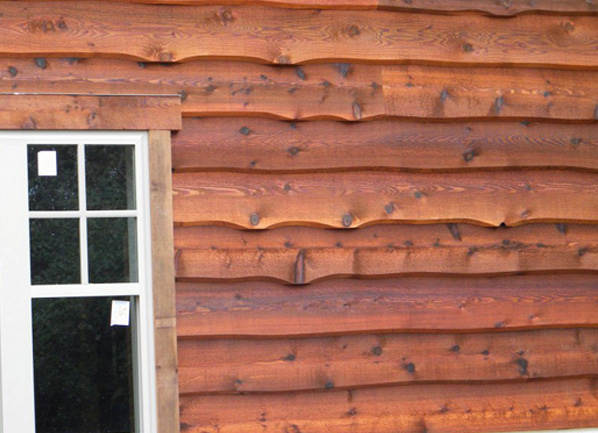
How and Why Cedar Siding is Environmentally Friendly
The appealing qualities of Western Red and Yellow Cedar siding are well-known to architects, engineers, and homeowners. Aesthetically pleasing in its natural state, consumers desire it for this quality alone, in addition to its pleasant wood scent. When maintained regularly, cedar wood also outlasts many other types of siding material. But one of the major reasons Cedar siding remains superior to other man-made siding options is because of its small environmental footprint.
 Siding substances, such as concrete, steel, and composite, simply cannot beat cedar in the eco-friendly department.
Siding substances, such as concrete, steel, and composite, simply cannot beat cedar in the eco-friendly department.
BIODEGRADABLE
Cedar breaks down naturally to be absorbed back into the earth without the harmful effects of other man-made siding. Consumers can appreciate that when the cedar siding has come to its natural end that it won’t end up leaking toxins into the earth in a landfill.
ECONOMICAL
Since cedar maintains inherent protective properties, the siding will help insulate the home better, thereby reducing heating and cooling costs year-round. Although more expensive than certain siding material, the homeowner eventually saves in utility costs with cedar.
LEAST ENVIRONMENTAL IMPACT
Manufacturing wood produces less toxins and greenhouse gases than man-made siding materials. Therefore, air and water quality are not adversely affected by cedar siding.
LOW ENERGY CONSUMPTION
As mentioned, the energy required to manufacture, transport, and install steel for example, is much higher than energy use for cedar. BC sourced Western Red Cedar siding simply does not require the same amount of energy to produce as other substances—definitely a winner in the ‘green’ department.
RECYCLABLE
Cedar wood is easily recycled (as wood chips for instance) and regenerated like no other material can be. Man-made materials often emit toxins into the air when manufactured and eventually get dumped into our landfills—not cool.
RENEWABLE
Wood may be replanted and harvested many times over. Indeed, it is the only building material that is 100% renewable. In BC alone, there is an average of 8 million seedlings planted annually. Most other used siding material is transported to a landfill. Meanwhile, cedar trees are replanted and continue to fill our air with more oxygen, while simultaneously reducing pollution by absorbing carbon dioxide. Cedar trees are a huge benefit to the green movement!
SAFE FOR HEALTH
Untreated cedar wood siding does not release any toxins into the air and it therefore safe for everyone’s health.
Certainly, builders select Western Red and Yellow Cedar siding for plenty of excellent reasons, including its less harmful environmental impact for future generations. Homeowners value nature-friendly cedar siding for not adding to the toxic build-up of material in our landfills and for leaving a more positive future ahead for their children than previous generations.
As a consumer, when you purchase Forest Stewardship Council certified wood products, you can appreciate that the wood is sourced from FSC (Forest Stewardship Council)® certified forests. Longhouse Specialty Forest Products maintains the FSC (Forest Stewardship Council)® certification by the Rainforest Alliance. Sustainable cedar forests are carefully managed in the Pacific Northwest. Therefore, purchasing cedar siding from Longhouse that is directly sourced from Vancouver Island is a win for everyone, including our planet.

